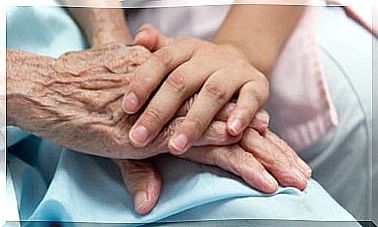How To Intervene With Children With Disobedient Behaviors

Knowing how to intervene with children with disobedient behaviors and associated conduct disorders is one of the most frequent parental challenges. If it is not intervened quickly and effectively, the relationship between parents and their children can become very aversive.
There are different types of disobedient behaviors, from ignoring direct orders (eg, refusing to sit in a restaurant) to not following implicit rules (eg, not wanting to brush teeth). On the other hand, as a solution, many parents choose to repeat the same order infinitely, yelling, punishing, etc.
In this sense, it should be noted that disobedient behaviors are part of the evolutionary development of a child. They are characteristic of the first years of life and tend to disappear with the passage of time.
Achenbach and Edelbrock (1981) found in their study that 50% of the parents of children aged 5-6 years complained of disobedient behaviors. In contrast, in parents of 16-year-old adolescents, only 20% presented complaints of disobedient behavior.

When are there behaviors of disobedience?
According to Forehand and Mcmahon, there is a behavior of disobedience when:
- You are given an order, instruction or request and it does not comply with it within a period of time. The usual is about 20 seconds.
- A person responsible for the child asks the child to stop doing what he is doing or not to start one that is about to happen and the child does not stop his behavior within a predetermined period of time.
- The child does not carry out a behavior that by an implicit rule he has to carry out, such as preparing his backpack, getting dressed, brushing his teeth, etc.
- The child engages in conduct that is implicitly or explicitly prohibited.
In turn, there are different factors that usually contribute to the persistence of disobedient behaviors:
- Coercive behaviors of children and parents (eg: yelling to ask parents for something, yelling to get
obedience from the child) are maintained by both positive and negative reinforcement. - Little stability of children’s obedient behavior controlled by parental punishment.
- Progressive increase in intensity and frequency of coercive behaviors.
- The child learns by modeling the aggressive responses of the parents.
- Parents’ lack of ability increases their intra and extra-family stress.
- Risk of the child developing more serious behaviors (eg, theft).
Why do the behaviors of disobedience occur?
In explaining the behavioral disorders associated with obedience, the importance of instrumental learning factors must be highlighted , as well as the primacy of family socialization processes.
Patterson has developed one of the most widely used models to understand the development and maintenance of disobedient behaviors in children, this would be the coercion hypothesis.
Coercion hypothesis
These would be its main points:
- Human beings have at birth a range of coercive, rudimentary, instinctive and
highly adaptive behaviors (eg: crying). - These behaviors rapidly shape parental care behaviors towards the child (eg, feeding).
- As the child develops, he changes these rudimentary coercive behaviors for more sophisticated ones (eg,
social skills and verbal communication).
- If parents tend to ignore verbal requests (sometimes due to parental socializing failures) and
attend to rudimentary coercive control behaviors, the former are extinguished and the latter are maintained.
Treatment of disobedient behavior
The treatment of conduct disorders is based on operant conditioning techniques that parents apply after being instructed by the therapist during the sessions. Various techniques are used such as time out, response cost, extinction, etc. An important aspect is to highlight the importance of positive reinforcement. For two reasons:
- Of all the operating techniques, the different reinforcement modalities will be the only ones that will be destined to construct behaviors. The rest of the techniques are aimed at reducing them.
- Parents often do not use reinforcement or do it poorly.
Treatment goals in disobedience behaviors
The treatment is based on the therapist’s work with the parents (the contact with the child is less). The objective is to change the contingencies that determine parent-child relationships for more appropriate ones. Besides, this change takes place in natural situations.
For this, parents are instructed in the principles of learning that underlie the operant techniques to be used. Instruction, modeling, role-playing, and behavior rehearsal are used to help parents understand relevant skills and techniques. These techniques are usually practiced in session before applying them in the natural context.
What are parents taught in a treatment to reduce disobedient behaviors?
One of the goals of the program is to equip parents with parenting skills with their children. For each skill to be instructed, proceed as follows:
- The fundamentals, procedure and purpose of each skill are explained.
- The therapist explains the skill through role-playing or video.
- The parent practices the skill by being a therapist with the child.
- The child is involved, it is explained what the technique is about and it is practiced in the clinic. This procedure seems to reduce the possible resistance of the child.
- The parents separately practice with the child and the therapist corrects them.
- Parents practice in the clinic, but without feedback from the therapist.
- Parents of that skill are assigned homework, written materials, and sign-in sheets.

Differential attention
It is important to know how to pay different attention to appropriate and inappropriate behaviors. Parents are often reinforcing inappropriate behaviors by paying attention to them, when they believe they are reducing the likelihood of the behavior happening again.
By paying attention to the behaviors that we want to be repeated and neglecting the behaviors that we do not want to occur less, we will break the vicious circle and coercion between parents and children. You train in this order:
- Parents learn to attend to appropriate behaviors through physical and verbal rewards.
- Parents learn to extinguish inappropriate behaviors.
- It is practiced at home daily (at least 5 minutes) in free play situations, and then the number of behaviors of the child is expanded.
Orders and obedience
A central goal of parenting treatment programs for conduct disorder in children is to give orders. It is important to attach the corresponding contingencies for compliance / non-compliance to the orders given by the parents.
Orders must:
- Be clear and specific.
- Be understandable to children.
- As short as possible.
- Do not enter into contradiction with others.
- Be given in a small number.
- They must be given one at a time and sufficiently spaced in time.
- They must not be accompanied by instigating physical contact. It has been seen to be an enhancer of non-compliance.
Knowing how to give orders is important so that they are carried out. The usual procedure is as follows:
- The order is given to the child.
- Allow a reasonable time for compliance, around 20 seconds.
- If the child complies with the order within the allotted time, the parents are instructed to reinforce him.
- Faced with the order not being complied with, the parents must notify the child that there will be a negative consequence if the disobedience continues (usually cost of response or time out).
- If the child finally obeys it is reinforced. If not, the negative consequence is administered.
- Once the negative consequence is applied, you return to the original situation, that is, you do not get rid of carrying out the order.
Once parents know how to apply it at home, they can try it in other contexts. The last of all the objectives is to learn to establish fixed orders that are always applied without the need for the request to be made (following implicit rules).









